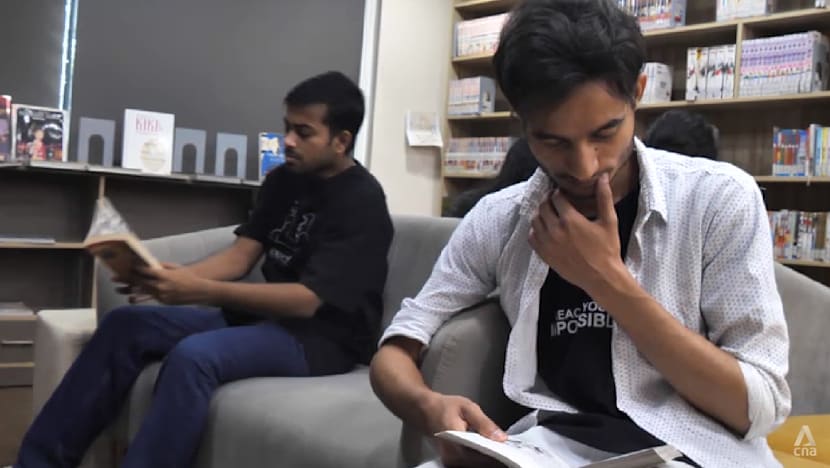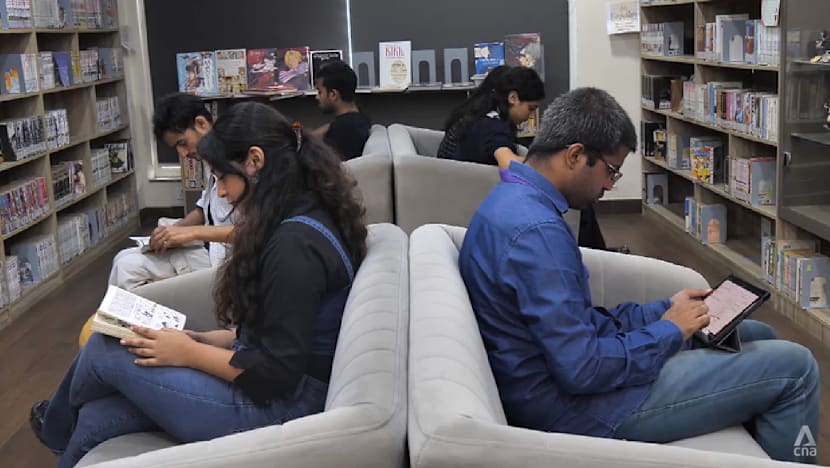How manga and anime are captivating India’s youth, inspiring a new generation of creators
India has become the world’s second largest anime market after China, with around 180 million fans of Japanese animated films and series.

At the Japan Foundation's library in New Delhi, young manga enthusiasts flip through vividly illustrated Japanese comics – immersing themselves in stories brimming with adventure and emotion. The library houses more than 2,500 manga titles in both English and Japanese, offering Indian readers a window into an entirely different culture.

This audio is generated by an AI tool.
NEW DELHI: At the Japan Foundation's library in New Delhi, young manga enthusiasts flip through vividly illustrated Japanese comics – immersing themselves in stories brimming with adventure and emotion.
The library houses more than 2,500 manga titles in both English and Japanese, offering Indian readers a window into an entirely different culture.
“In manga, we get to know about day-to-day life, (and) how even day-to-day life can be interesting,” said 24-year-old manga enthusiast Amit Kumar. “We laugh at it, we enjoy it, (and) we cry for it.”
Once seen as mere entertainment for children, manga and anime have a rapidly expanding fan base in the South Asian nation.
These Japanese comic books and animated films have also become a cultural bridge between Japan and India.

EXPANDING FAN BASE
Today, manga and anime conventions are drawing large crowds in Indian cities, complete with cosplay competitions, themed merchandise and fan art displays.
Major publishers have started releasing translated editions of popular manga series, making them more accessible to local readers.
Many young Indians say it is more than just storytelling – it is an entry point into learning a new language and discovering another way of life.
“You can also learn a lot of things about Japan and their tradition and their culture,” said Japanese learner and teacher Meghna Rawat.
“So, I started learning Japanese because I was interested in manga and anime.”
Universities in India are increasingly offering Japanese language courses, with many students citing manga and anime as their primary motivation for enrolment.
INDIA’S CREATIVE FUTURE
The growing presence of manga and anime in India goes back several decades.
In the 1990s, global hits like Pokemon introduced Indian audiences to Japanese animation and comics, laying the foundation for the fandom that thrives today, said observers.
With titles like One Piece adapted into anime for global streaming platforms such as Netflix, a new generation is embracing the genre.
The fascination is not limited to fans alone. It is also opening doors for new business opportunities.
India has become the world’s second largest anime market after China, with around 180 million fans of Japanese animated films and series.
The country’s anime market is projected to grow from US$1.6 billion in 2023 to nearly US$5 billion by 2032.
For some, what began as a hobby has evolved into a lifelong passion.
But even amid this growing enthusiasm, India has been slow to support local creators.
Jazyl Homavazir, creator of India’s first award-winning manga series Beast Legion, said the boom in anime has not yet translated into opportunities for Indian manga artists.
Homavazir said: “There aren't any publishers that are currently taking local content nor are there any distributors that help you bring out your book into the world – not just comic book stalls but book stalls. So that scene is still evolving.”
His work merges Japanese manga influences with Western comic styles.
Like many illustrators, Homavazir hopes the ecosystem will mature to match fans’ enthusiasm and help local artists find their place among these beloved international classics.
They believe manga and anime represent far more than a passing trend, and connect Japan’s rich cultural traditions with India’s creative future.


















